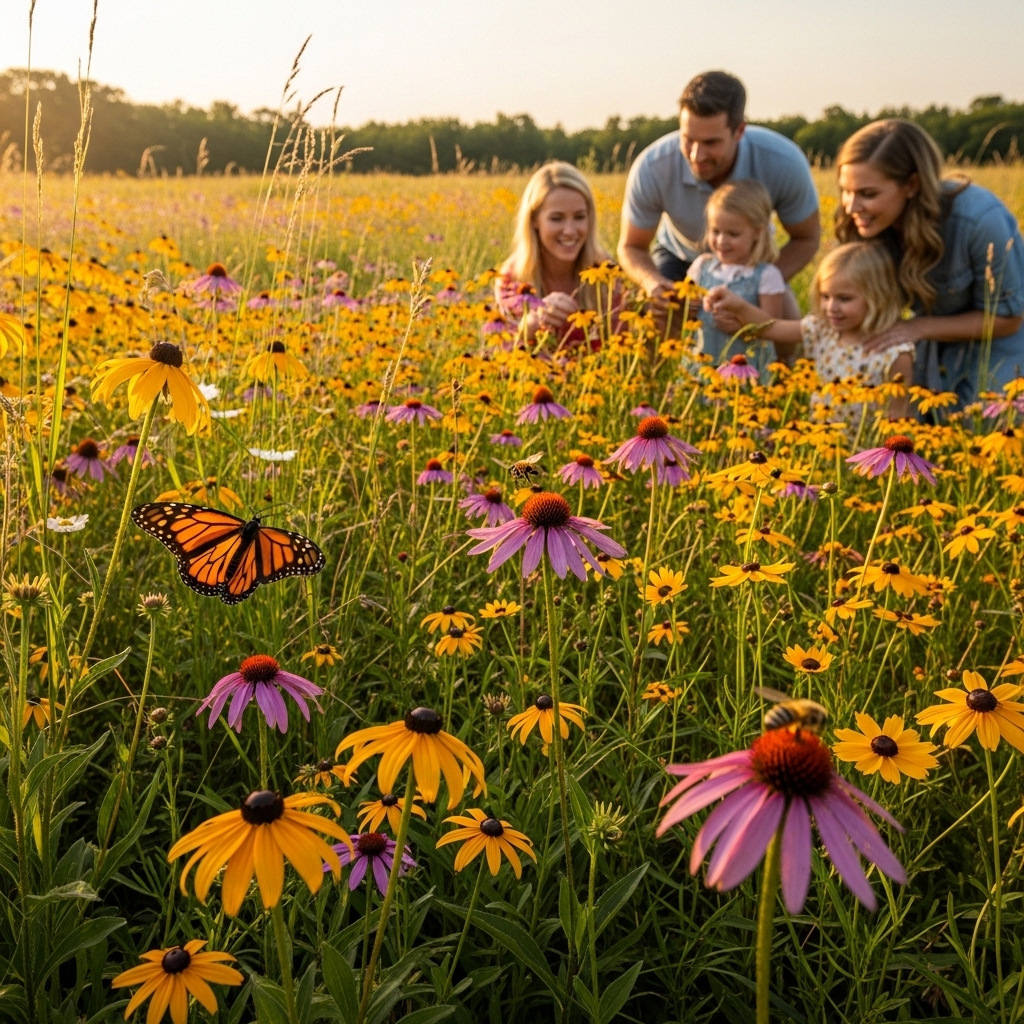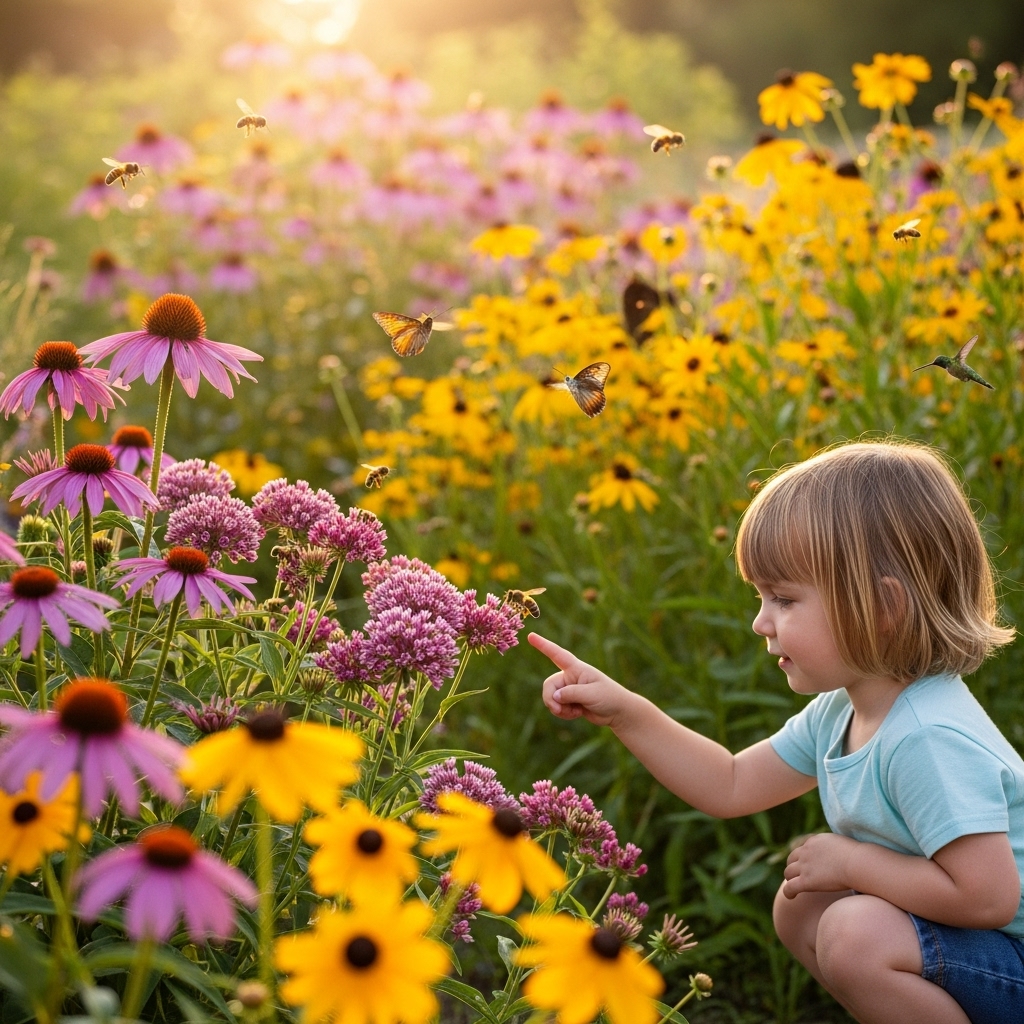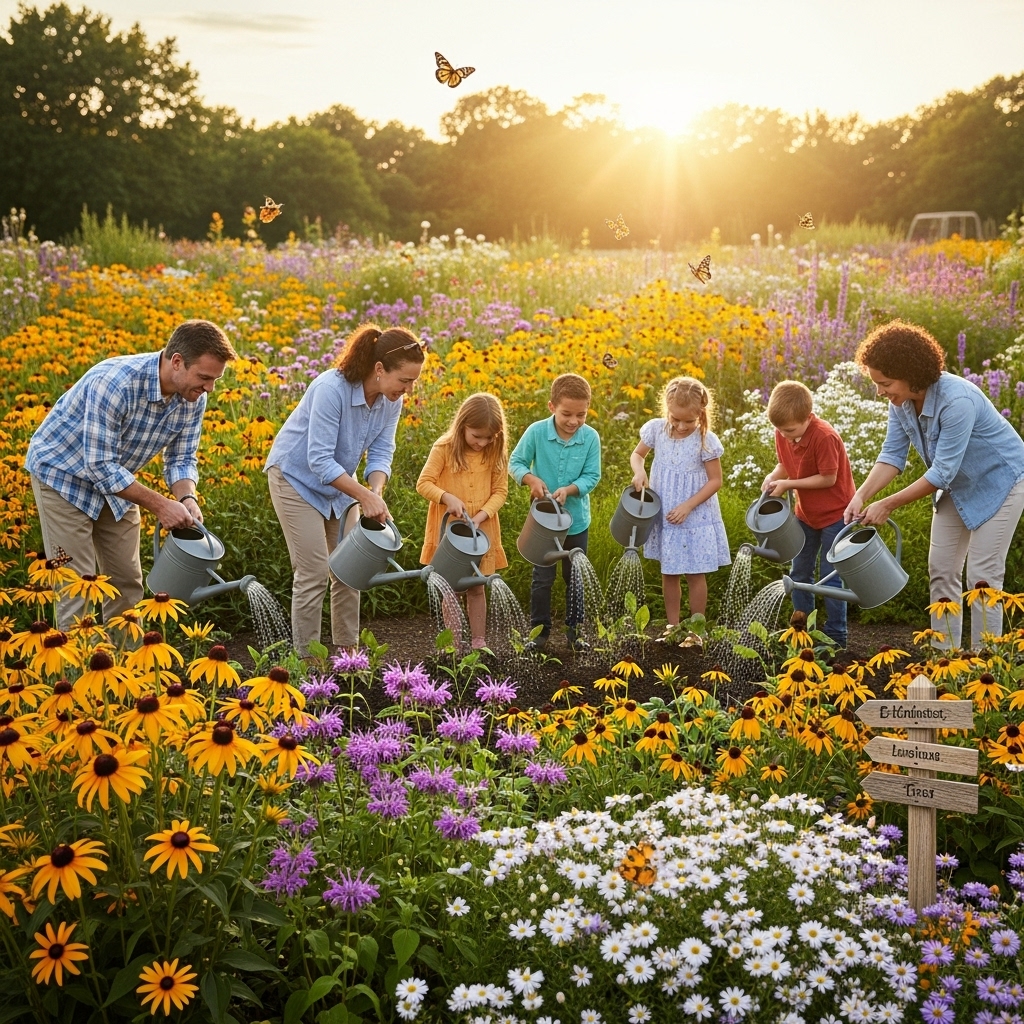Creating a pollinator paradise with Illinois native wildflowers is a rewarding journey I embarked upon. By inviting these vibrant blooms into my garden, I’ve not only enhanced its beauty but also supported essential pollinators like bees, butterflies, and hummingbirds.
Understanding the Importance of Native Wildflowers

Before diving into the specifics of how to create a pollinator paradise, I feel it’s crucial to understand why native wildflowers are so significant. As I began this endeavor, I learned that native plants have adapted to the local climate and soil conditions over thousands of years. This adaptability makes them more resilient than non-native species, requiring less maintenance and fewer resources, such as water and fertilizers.
One of the most compelling reasons to choose Illinois native wildflowers is their role in supporting local ecosystems. I’ve found that these plants provide food and habitat for a variety of wildlife, particularly pollinators. Pollinators are vital for the reproduction of many flowering plants, and as I watched bees and butterflies flit from bloom to bloom, I appreciated the intricate relationships that sustain our environment.
Benefits of Pollinator Gardens
Creating a garden specifically for pollinators has numerous benefits. When I planted my native wildflowers, I noticed an increase in not only the number of bees and butterflies but also in the overall biodiversity of my property. This diversity helps to create a balanced ecosystem, which is crucial for maintaining healthy populations of both plants and animals.
Additionally, pollinator gardens contribute to the health of our environment by improving air quality, reducing soil erosion, and increasing water retention. I’ve witnessed how the roots of native plants hold the soil together, preventing runoff and enriching the ground beneath them. This has made a noticeable difference in the overall health of my garden.
Choosing the Right Native Wildflowers
Once I grasped the importance of native wildflowers, it was time to select the right species for my garden. Illinois boasts a rich variety of native plants, and I found it helpful to research those that thrive in my area. I discovered that certain wildflowers not only attract specific pollinators but also bloom at different times throughout the growing season, ensuring a continuous food source.
Some of my favorite Illinois native wildflowers include:
- Black-eyed Susan (Rudbeckia hirta): A bright yellow flower that blooms in summer, attracting a variety of bees and butterflies.
- Common Milkweed (Asclepias Syriaca): Essential for monarch butterflies, this plant provides both nectar and habitat.
- Wild Bergamot (Monarda fistulosa): Known for its minty fragrance, it draws hummingbirds and bees alike.
- Prairie Blazing Star (Liatris pycnostachya): This tall, spiky flower is a magnet for many pollinator species.
- Compass Plant (Silphium laciniatum): With its towering stalks and bright yellow flowers, it attracts a variety of insects.
In selecting these plants, I paid attention to the sunlight and soil conditions of my garden. Some of these wildflowers thrive in full sun, while others can tolerate partial shade. I took the time to assess my garden and choose plants that would flourish in their respective locations.
Designing Your Pollinator Garden
With my plant selections in hand, it was time to design my pollinator garden. I wanted to create an inviting space that would allow me to witness the beauty of nature up close. I began by sketching out a layout that incorporated clusters of flowers, which I learned would create a more appealing environment for pollinators. I found that grouping plants together helps them to attract more pollinators than if they were planted singly.
In my design, I decided to incorporate plants of varying heights, which added visual interest and provided different layers of habitat. Taller plants like the Compass Plant stood proudly at the back of my garden beds, while shorter species like Black-eyed Susans filled in the front. This arrangement also ensures that the flowers are more easily accessible for pollinators, allowing them to move seamlessly from one bloom to another.
Another consideration I found crucial was providing a variety of bloom times. I made sure to include early bloomers like Wild Bergamot, which flowers in late spring, alongside late bloomers like Prairie Blazing Star, which comes alive in late summer. This thoughtful planning ensures that pollinators have a steady food source throughout the growing season.
Maintaining Your Pollinator Paradise
Creating a pollinator paradise doesn’t end with planting; maintenance is essential for its success. One of the first lessons I learned was the importance of proper watering. Native plants typically require less water than non-native species, but I found that during the first year, regular watering helped them establish strong root systems. Once established, they thrive with minimal intervention.
As I maintained my garden, I also embraced the beauty of natural growth. I resisted the urge to prune every plant meticulously, allowing some growth to be wild and untamed. This not only creates a natural habitat for various insects but also adds to the garden’s charm.
Lastly, I began to appreciate the role of mulch in my garden. A layer of mulch helps retain moisture and suppress weeds, ensuring that my native wildflowers have the best chance to thrive. I chose organic mulch, which also enriches the soil as it breaks down over time.
Embarking on the journey to create a pollinator paradise with Illinois native wildflowers has been incredibly fulfilling. I’ve delighted in watching nature unfold right in my backyard, knowing that my efforts are contributing to the health of our environment and supporting vital pollinator populations. As I continue this journey, I look forward to sharing more tips and insights on how to enhance this beautiful habitat.
Attracting Pollinators Beyond Flowers

As I delved deeper into my journey of creating a pollinator paradise, I realized that attracting pollinators isn’t solely about planting flowers. I wanted to make my garden a truly welcoming environment for these vital creatures, so I explored additional strategies that could enhance their experience. One of the key aspects I discovered was the importance of providing water sources. Pollinators, like any other wildlife, need water to survive, and I found creative ways to incorporate this essential element into my garden.
In my garden, I placed shallow dishes filled with water, adding a few pebbles for stability. This not only provided a safe place for bees and butterflies to drink but also created a small oasis that attracted other wildlife. I often enjoyed watching birds and beneficial insects come to sip from these water sources. It was a delightful way to witness the interconnectedness of nature right in my backyard.
Another strategy I employed was to create sheltering habitats. I began to appreciate that many pollinators require places to rest, nest, and hide from predators. To support this, I incorporated native grasses and shrubs that offer refuge. I also left some areas of my garden a bit untidy—allowing for brush piles and leaving fallen leaves in certain spots. This “messy” approach nurtured a habitat for overwintering insects and provided nesting sites for solitary bees.
Companion Planting for Enhanced Pollination

As I explored more ways to support pollinators, I stumbled upon the concept of companion planting. This method involves growing different plants in proximity for mutual benefits, and I found it to be a fascinating aspect of gardening. Some plants can enhance the growth and health of others, and in my case, I learned that certain combinations could attract even more pollinators.
For example, I discovered that planting beans alongside my wildflowers could help fix nitrogen in the soil, benefiting the surrounding plants. Additionally, I found that herbs like basil and dill not only repelled unwanted pests but also attracted pollinators such as hoverflies and other beneficial insects. Integrating these companion plants into my garden not only improved the health of my native wildflowers but also increased the diversity of pollinators visiting my space.
Engaging with the Pollinators

One of the most rewarding aspects of creating this pollinator paradise was the opportunity to engage with the visitors to my garden on a deeper level. I started to spend time observing their behaviors—how they interacted with different plants, their feeding habits, and even their flight patterns. I learned to appreciate the subtle differences between various bee species and the unique ways that butterflies fluttered around my blooms.
To enhance this engagement, I began documenting my observations. I created a simple journal where I recorded the different species I spotted, the times of day they visited, and the flowers they preferred. This not only helped me understand the dynamics of my garden better but also made me feel more connected to the natural world around me. Through this journaling process, I developed a deeper appreciation for the intricacies of the ecosystem I was nurturing.
I also decided to share my findings with friends and family. Hosting small gatherings in my garden became a way to spread awareness about the importance of pollinators and the role native plants play in their survival. I found that when I shared my passion and knowledge, it inspired others to consider creating their own pollinator gardens. It was fulfilling to see others excited about the prospect of supporting these essential creatures.
Expanding the Pollinator Paradise

While my garden was flourishing, I began to wonder how I could extend this pollinator-friendly approach beyond my own backyard. I reached out to local gardening clubs and conservation groups, eager to connect with like-minded individuals who shared my passion. I learned about community initiatives aimed at creating pollinator habitats in public spaces, which sparked an idea in me.
With the support of a few neighbors, I organized a community planting day. We chose a local park that had ample sunlight and space for wildflowers. Together, we selected a variety of native plants and prepared the soil. It was a wonderful experience, watching community members—some seasoned gardeners and others complete novices—come together to contribute to a cause bigger than ourselves. We not only planted flowers but also educated each other on the importance of pollinators and how we could all make a difference.
Through this initiative, we created a small pollinator garden in the park that served as a living testament to our collective efforts. I found great joy in knowing that we were providing food and habitat for pollinators, enriching a public space, and fostering community spirit.
Final Thoughts
Reflecting on this journey, I can’t help but feel a profound sense of accomplishment and gratitude. From the initial planting of native wildflowers to expanding the concept of a pollinator paradise into the community, every step has deepened my connection to nature. I’ve learned that nurturing our gardens goes beyond aesthetics; it’s about creating ecosystems that thrive, supporting the intricate web of life that sustains us all. I look forward to exploring more ways to enhance my garden and share the joy of pollinator-friendly practices with others.
